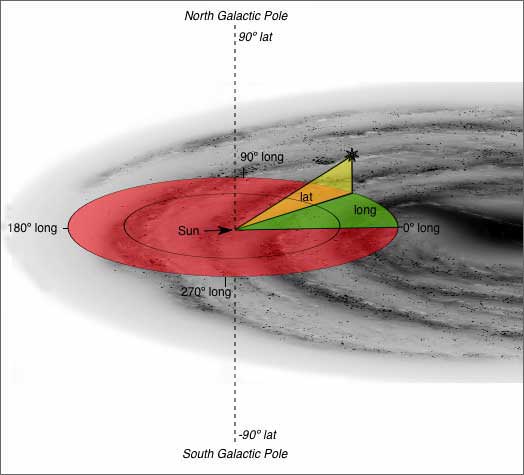Universe Today | Steve Nerlich | 2011 Sept 17
Some recent work on Type 1a supernovae velocities suggests that the universe may not be as isotropic as our current standard model (LambdaCDM) requires it to be.
The standard model requires the universe to be isotropic and homogeneous – meaning it can be assumed to have the same underlying structure and principles operating throughout and it looks measurably the same in every direction. Any significant variation from this assumption means the standard model can’t adequately describe the current universe or its evolution. So any challenge to the assumption of isotropy and homogeneity, also known as the cosmological principle, is big news.
Of course since you are hearing about such a paradigm-shifting finding within this humble column, rather than as a lead article in Nature, you can safely assume that the science is not quite bedded down yet. The Union2 data set of 557 Type 1a supernovae, released in 2010, is allegedly the source of this latest challenge to the cosmological principle – even though the data set was released with the unequivocal statement that the flat concordance LambdaCDM model remains an excellent fit to the Union2 data.
Anyhow, in 2010 Antoniou and Perivolaropoulos ran a hemisphere comparison – essentially comparing supernova velocities in the northern hemisphere of the sky with the southern hemisphere. These hemispheres were defined using galactic coordinates, where the orbital plane of the Milky Way is set as the equator and the Sun, which is more or less on the galactic orbital plane, is the zero point.
Antoniou and Perivolaropoulos’ analysis determined a preferred axis of anisotropy – with more supernovae showing higher than average velocities towards a point in the northern hemisphere (within the same ranges of redshift). This suggests that a part of the northern sky represents a part of the universe that is expanding outwards with a greater acceleration than elsewhere. If correct, this means the universe is neither isotropic nor homogeneous.
However, they note that their statistical analysis does not necessarily correspond with statistically significant anisotropy and then seek to strengthen their finding by appealing to other anomalies in cosmic microwave background data which also show anisotropic tendencies. So this seems to be a case of looking at number of unrelated findings with common trends – that in isolation are not statistically significant – and then arguing that if you put all these together they somehow achieve a consolidated significance that they did not possess in isolation.
More recently, Cai and Tuo ran much the same hemispherical analysis and, not surprisingly, got much the same result. They then tested whether these data favoured one dark energy model over another – which they didn’t. Nonetheless, on the strength of this, Cai and Tuo gained a write up in the Physics Arxiv blog under the heading More Evidence for a Preferred Direction in Spacetime – which seems a bit of a stretch since it’s really just the same evidence that has been separately analysed for another purpose.
It’s reasonable to doubt that anything has been definitively resolved at this point. The weight of current evidence still favours an isotropic and homogeneous universe. While there’s no harm in mucking about at the edge of statistical significance with whatever limited data are available – such fringe findings may be quickly washed away when new data comes in – e.g. more Type 1a supernovae velocity measures from a new sky survey – or a higher resolution view of the cosmic microwave background from the Planck spacecraft. Stay tuned.
Spectra and Light Curves of Six Type Ia Supernovae at 0.511 < z < 1.12 and the Union2 Compilation - R. Amanullah et al
- Astrophysical Journal 716(1) 712 (2010 June 10) DOI: 10.1088/0004-637X/716/1/712
arXiv.org > astro-ph > arXiv:1004.1711 > 10 Apr 2010
- Cosmology and Astroparticle Physics 12 012 (Dec 2010) DOI: 10.1088/1475-7516/2010/12/012
arXiv.org > astro-ph > arXiv:1007.4347 > 25 Jul 2010 (v1), 07 Dec 2010 (v3)
- arXiv.org > astro-ph > arXiv:1109.0941 > 05 Sep 2011 (v1), 10 Sep 2011 (v4)
<< Previous


